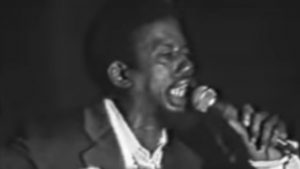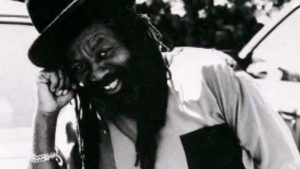In this essay, we argue that religion, in the Caribbean and Latin America embodies what we term ‘gender ideology’ which, in our discussion, would embody the dialectical contradictions, the unity of opposites, expressed in moments of patriarchal dominance and feminism and women’s liberation. Here, ideology is understood as a system of beliefs, symbols, myths, rituals and values which express themselves in concrete attitudes and which influence and guide the action of a particular class or social group in its own interest.
We also understand ideology as a significant element in the struggle for dominance by a particular class or social group in relation to other social classes or groups. We must note, however, that the opposing social groups, women and men, define, explain and articulate the nature of their aims, intentions and goals and the reasons for the means being used in pursuit of these aims, in the context of a common system of ideas: in our case that of Christianity and biblical doctrine.
The interpretation of biblical doctrine, then, provides the basis for the dual ideological manifestations found in gender ideology which embodies the tension, as stated above, between ideas of patriarchy and women’s liberation and feminism. This means that inherent in the Scriptures is a dialectic which plays itself out in the struggle of women against a worldview and ideology expressed in the practice of male dominance and male superiority. The dissemination of this ideology or worldview develops and is expressed through civil society’s material and institutional structures which include the family, school, the church, and propagated by the socio-economic system, culture and tradition. How then do we understand the basis for the construction of a gender ideology which is a pervasive motif in the social relations between women and men in Latin American and Caribbean societies where ‘maleness’ is revered and ‘womaness’ ‘cursed’?
Pauline doctrine recorded in the book of Ephesians (5:22-25) and the creation story which forms the core of Genesis, are often cited to justify notions of women’s inferiority. For its part, Pauline doctrine places women firmly in the domestic sphere and advises that their principal role is that of procreation and providing their husbands, to whom they should submit, with sexual pleasure. At the same time, the Genesis narrative (2:21-23) locates women in the role of help mate since woman reflects not the glory of God but that of man for whom she was created in a lesser form from his rib.
Capitalising on the creation narrative, Paul goes on to prescribe acceptable modes of women’s behaviour: obedience to men who are divinely ordained to be heads of households, submission to male authority, speechlessness and invisibility in church, and by extension society, and modesty in dress. And, in 1 Timothy 2:11-14, biblical doctrine informs that women should learn in silence and with ‘all subjection’, that they, who were not capable of giving instruction, should not usurp man’s authority, because Adam was made before Eve who, being deceived, had sinned. Adam had not sinned.
While the narrative within Leviticus is used to justify the physical abuse of women and that of Genesis to curse women, the book of Hosea, further establishes women’s inferior status. Stone, for example points out that this text, provides full support for a system of male authority and control which discriminates against women through society’s social, political and economic institutions.
According to Stone [1976] a husband fully identified himself with the male deity in a way which made his words the words of God. Consequently, not only priests, but all men were to be seen as the direct messengers of God, not only in the church but in the privacy of a women’s kitchen and bed. In addition, wives were considered to be the property of men [Exodus 20:17]. Other texts in the Old Testament such as Deuteronomy, Numbers and Judges, speak to unequal relations in marriage, the patriarchal family structure, issues of inheritance, adultery and the sexual abuse of women, all of which have been woven into an ideology to keep women in their place, without regard for time, history, context and space.
Nonetheless, it is this interpretation that is used instrumentally by church leaders, political leaders, indeed, all of society to marginalise and discriminate against women as individuals and as a social group. This patriarchal understanding of biblical narrative has also translated itself into an unequal socio-economic and political system, a socially unjust social system which is characterised by men’s greater access to and control of the rewards, benefits and privileges of authority structures in the domestic and public spheres.
If, therefore, it is natural or divinely ordained for women to be subjected to men to whom they belong, then this patriarchal interpretation of women’s status in society can be seen as underlying the practice of the abuse of women and girls by men. This abuse includes, for example, domestic and sexual violence, incest and rape, sexual slavery, forced sterilisation, forced pregnancy and the violence of poverty and deprivation. If we believe this to be so, then we can argue that the institutional church is an agent of social injustice and its propagation of a worldview which seeks to devalue women and render them invisible is simply to keep themselves in positions of power over women. It is this use of the ideology of patriarchy that has formed the basis for a reinterpretation of biblical doctrine to show that the bible is sensitive to social justice.
In this respect, we note that Christian doctrine, at the same time, appears as ideology critique and a critique of an oppressive social relationship embodying such values as freedom, equality and justice. In this sense, Christianity offers women a positive context for understanding injustice. It also provides them with the power to rid themselves of the paradigm of an oppressive patriarchy and to build a new society with qualitatively new political, religious, social and economic arrangements, a just society in which the ideas and practice of patriarchy can find no place. For, the terms of reference for women’s liberation is not only rooted in an oppressive patriarchal system of existence but in a theological reflection which encourages them to confront the patriarchal ideas and structures of society, not as victims, but as agents of change and subjects of history. In this respect, the bible which presents to us a God of love and a God of justice also upholds women as symbols and examples of faith, wisdom, resistance, authority, power, leadership, justice and peace in solidarity with each other and with all disadvantaged social groups.
Biblical records reject the inferiority of women and their social inequality, eschews social and cultural discrimination against women and goes beyond their social role stereotypes. They, who participated in the people’s movement for liberation from bondage as recorded in both the Old Testament, have been given prominence as religious, spiritual and social leaders committed to collective struggle for their dignity and advancement in the process of societal change. We note the examples of Judith and Esther the revolutionaries, Abigail the strategist, Rahab the ally, Ruth and Naomi in solidarity, Deborah the wise, Miriam the defiant. We also note the revolutionary role played by Jesus when He embraced women in his ministry without discrimination at a time when socialising with women was out of keeping with cultural and social norms. The Gospel of John 4 attests to Jesus’ non-conformist attitude, his break with tradition and his sympathy towards women in a patriarchal culture seen in his dialogue with the ‘woman at the well’ who was the first recorded evangelist in history.
In fact, the New Testament does not record any sexist action on Jesus’ part. Nor is He ‘credited’ with any androcentric utterances. Women were central to Jesus’ ministry and one of the most outstanding leaders in this socio-religious movement was Mary Magdalene whose presence has been recorded in all four gospels. Other women of note in the New Testament include Junia the apostle, Anna the prophet, Elizabeth and Mary (mother of Jesus) sisters in faith. For Latin American feminist theologians who have reinterpreted ‘patriarchal’ or ‘orthodox’ theology to locate women at the centre of theological discourse and action, Mary, mother of Jesus, is God’s decree of liberation, ‘a model disciple’ who made a specific intervention at a particular historical juncture in the movement towards liberation and justice. For them, she is their role model and their inspiration for revolutionary thought and action.
For Caribbean feminist theologians, a feminist liberation theology offers positive resources for women who act on the basis of social justice. This radicalisation of Christianity is not isolated from the concrete daily experiences of women. It has its roots in a society which has denied and ignored women’s issues and women’s rights, and hence, in a praxis of male oppression and the experience of God as a liberator. Hence, a determination to radicalise Christianity and biblical doctrine through theological critique, reflection and affirmation is reflected in the body of thought known as ‘feminist theology’.
It is this contexualised reinterpretation of biblical doctrine that has given rise not only to a feminist theological reflection which is transformative and positive, but also to ideas of socio-political feminism and women’s liberation which, in the main, speak to a doctrine or body of ideas based on equal rights for women and an ideology of social transformation to create a society (and a world) free from social sin (discrimination and marginalisation) and unrighteousness (injustice). It is a theology and social movement that values women, their labour and their contribution to the family and to national development. It is one that insists on women’s rights as human rights, women’s freedom from poverty and deprivation, women’s freedom from racism and all forms of oppression, women’s control over their own destiny, their reproductive rights and their right to self-determination and self-actualisation.
What must be noted is that these opposing sides are struggling for dominance within the same ideological and socio-political space. And in any struggle of opposites, the contradiction within the opposing sides will become increasingly unable to remain in the framework of the former unity and will eventually become a struggle seeking resolution. Our hope, given the need for women to confront patriarchy in all its expressions in both church and society, is that this resolution will see a qualitatively new church and society where all marginalised and disadvantaged groups and classes, women in this case, will find justice, love and peace.
Judith Soares
The University of the West Indies
Recommended Readings
Bidegain, Anna Maria, “Women and the Theology of Liberation”in Elsa Tamez (ed). Through Her Eyes: Women’s Theology from Latin America. Maryknoll, N.Y.: Orbis Books, 1989.
Soares Judith (ed). Theologising Women. Barbados: Women and Development Unit, The University of the West Indies, 2007.
Stone, Merlin. When God Was a Woman. San Diego, New York, London: Harcourt Brace and Company, 1976.
Tamez, Elsa (ed). Through Her Eyes: Women’s Theology from Latin America. Maryknoll, N.Y.: Orbis Books, 1989.
Judith Soares, PhD, is Senior Lecturer and Head, Women and Development Unit, The University of the West Indies Open Campus.


About Judith Soares
JudithSoares,PhD,istheheadoftheUniversityoftheWestIndies'WomenandDevelopmentUnit.










